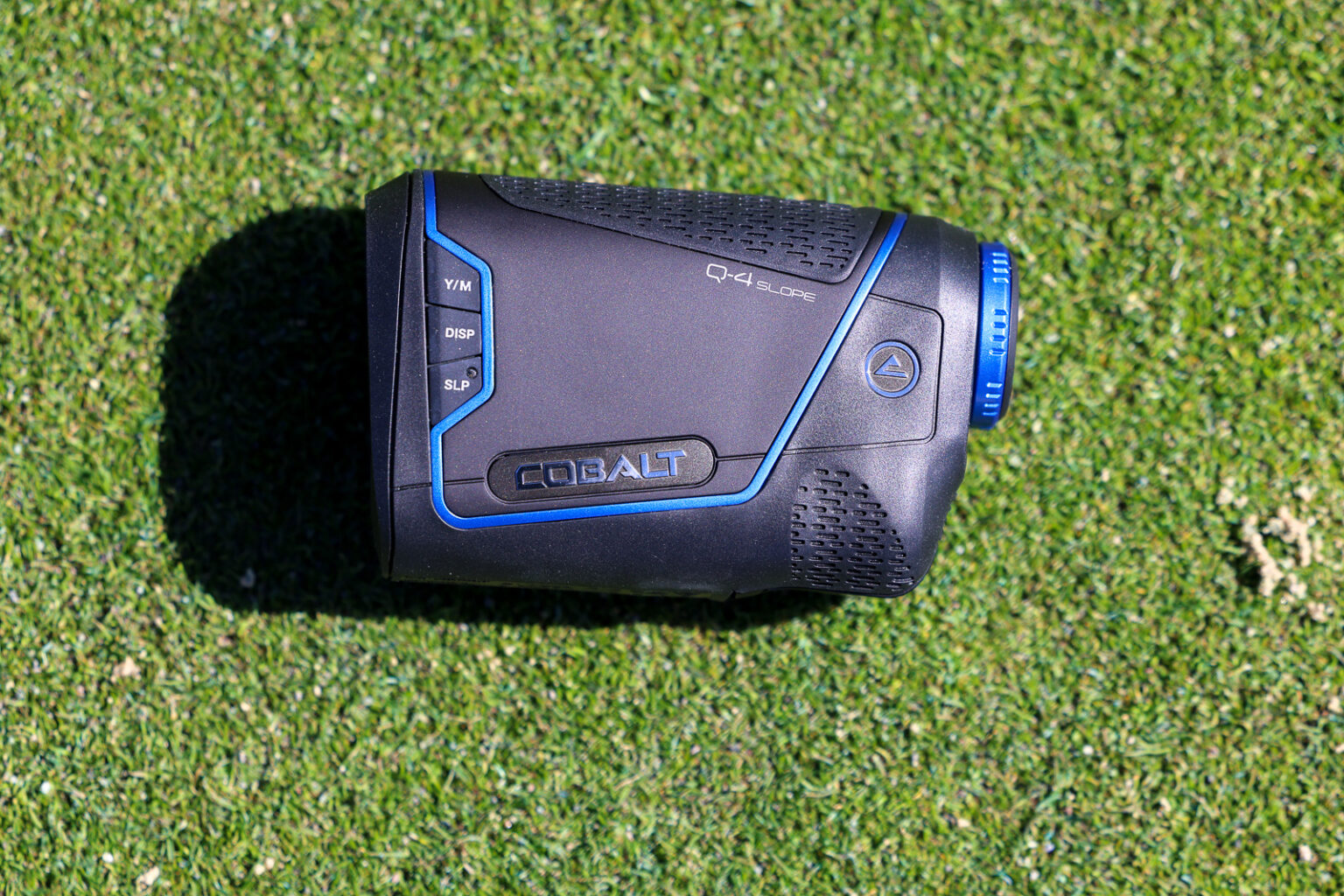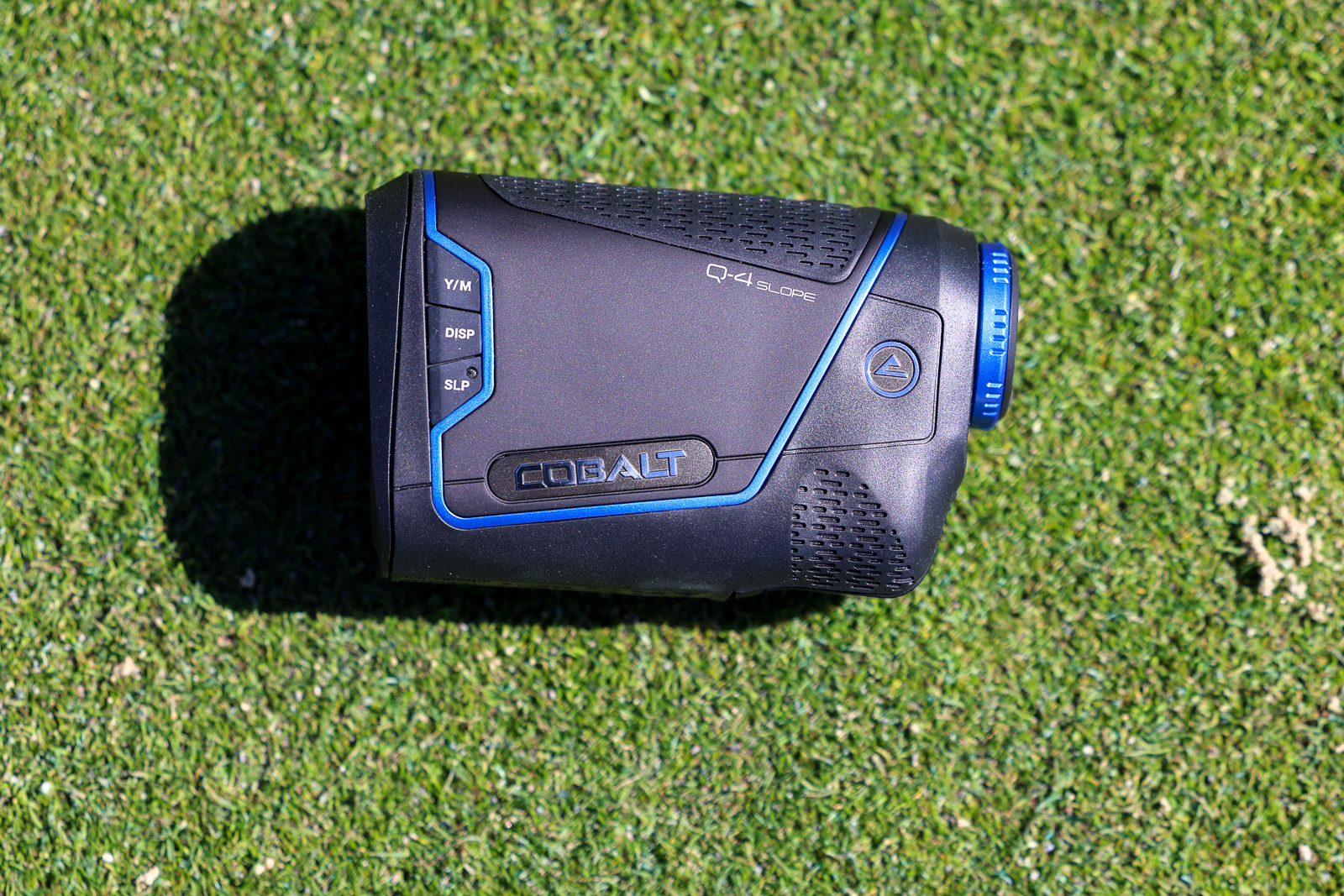I have over 30 golf rangefinders sitting in my office, and can you guess which one has gotten the most use over the past 12 months?
Nope, it’s not from Bushnell, Precision Pro, or Blue Tees – although they all make fantastic devices.
The rangefinder that I’ve used the most this past year is the Cobalt Q-6 Slope.
Cobalt is a direct-to-consumer brand that makes some of the most accurate rangefinders in golf.
It’s a tricky market to be in. The Q-6 retails for $449, and with the limited marketing budget of a small direct-to-consumer brand, it’s a difficult sell when pitted against a marketing behemoth like Bushnell.
But the product speaks for itself.
Fortunately, the decision to purchase a Cobalt, may be getting a little bit easier for some of you.
Introducing, the Cobalt Q-4 Slope.
This is the latest product from Cobalt, that still packs in a bunch of the technology from the higher-end Q-6, but does so at a much more affordable, sub $300 price point.
But does it cut too many corners? This is arguably the most competitive price point in the golf rangefinder space, so have they done enough to win over the masses?
Let’s find out in this Cobalt Q-4 Slope review.
First Impressions of the Cobalt Q-4 Slope
The design of the original Q-6 is a little bit polarizing. Personally, I think it looks great. The blue and black motif is different than anything else on the market, and the “SmartSwitch” dial, I also think sets it apart from everything else out there.
If you’re someone on the fence about the Q-6 design, then you’ll likely be much more pleased with the new Q-4 Slope design.
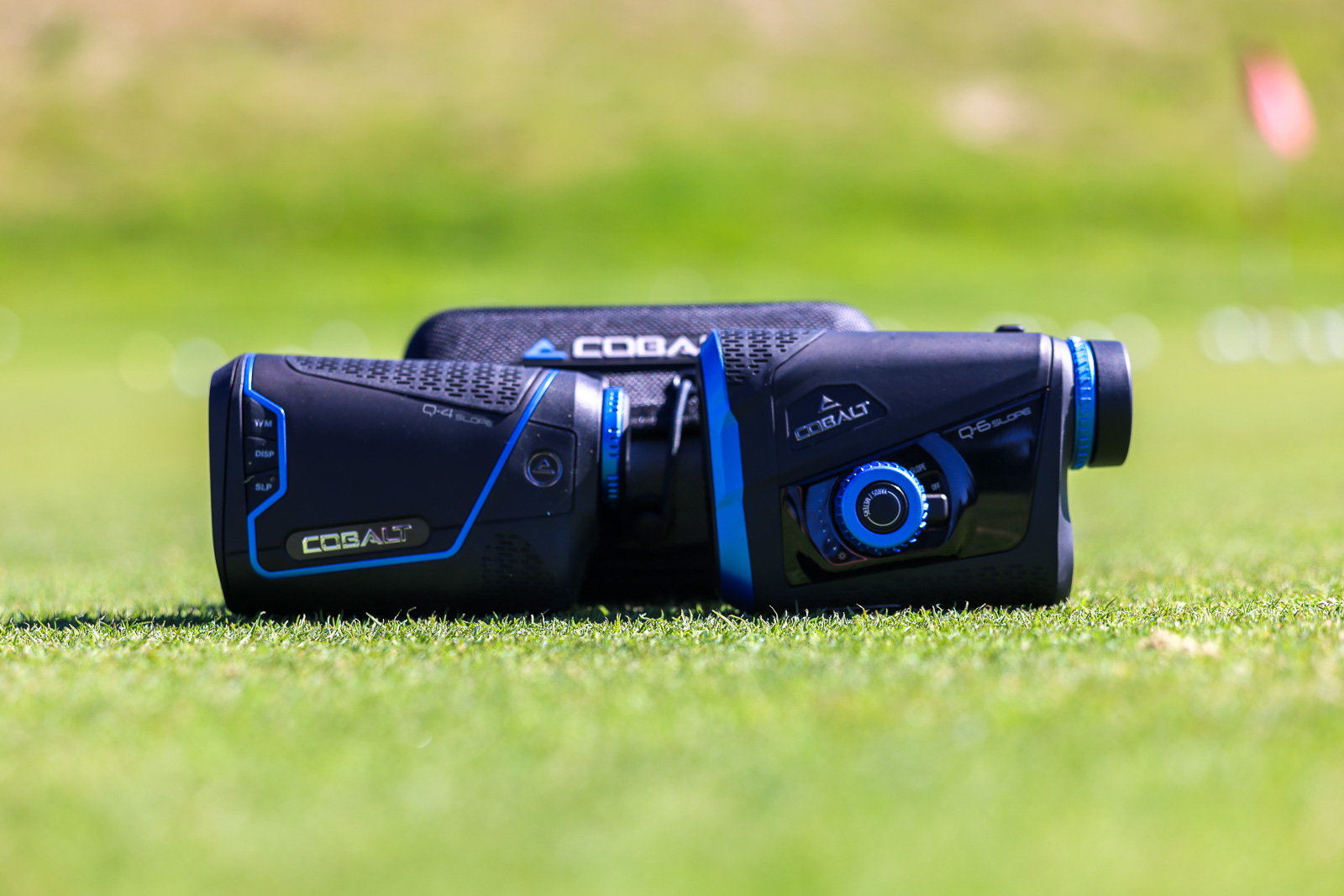
It keeps the same blue and black aesthetic while forgoing the adjustment dial. This gives it a more traditional rangefinder look.
Cobalt has never gone nuts with its packaging. The box is pretty basic, and they’re not spending a ton of extra money on aesthetic touches like some other brands.
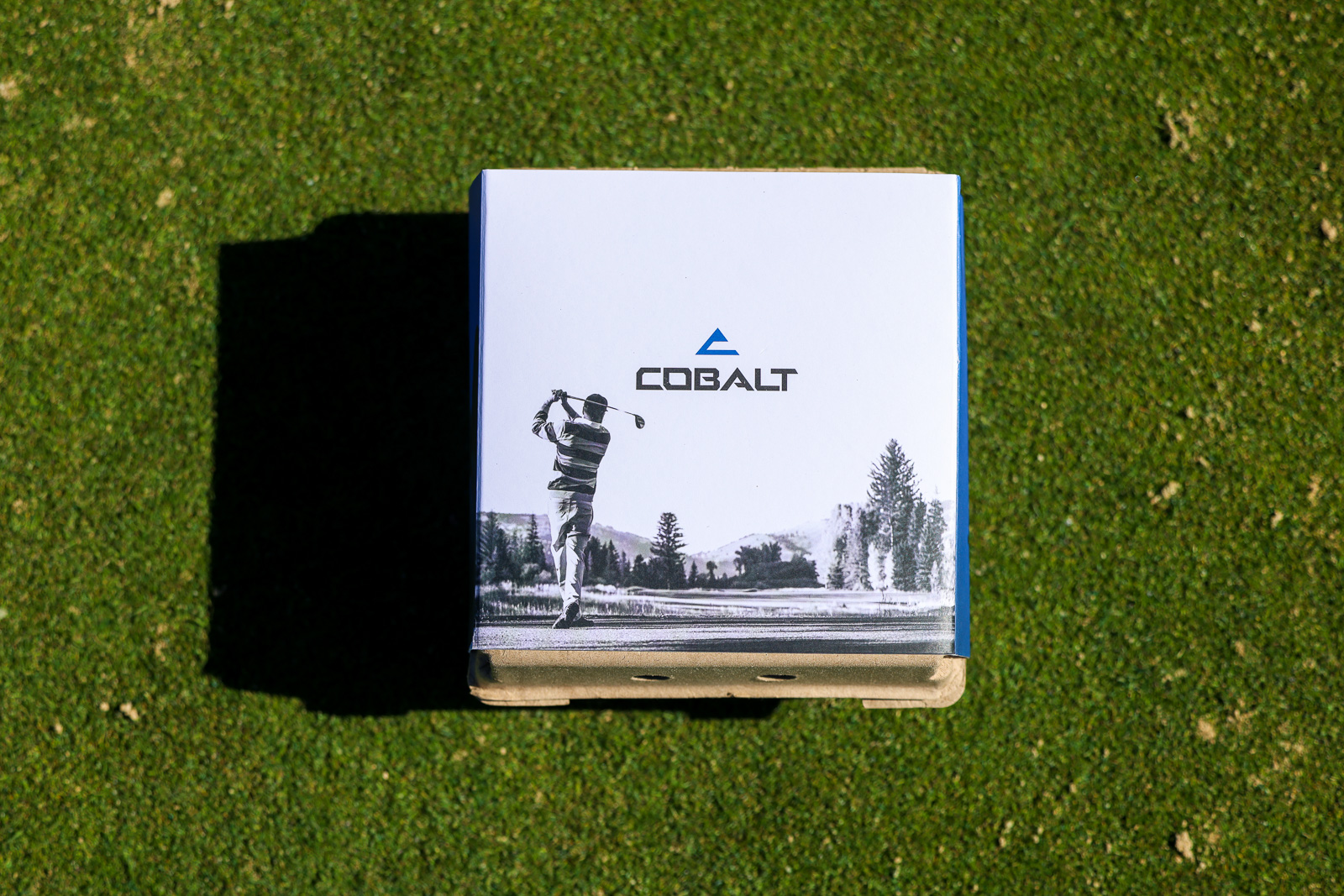
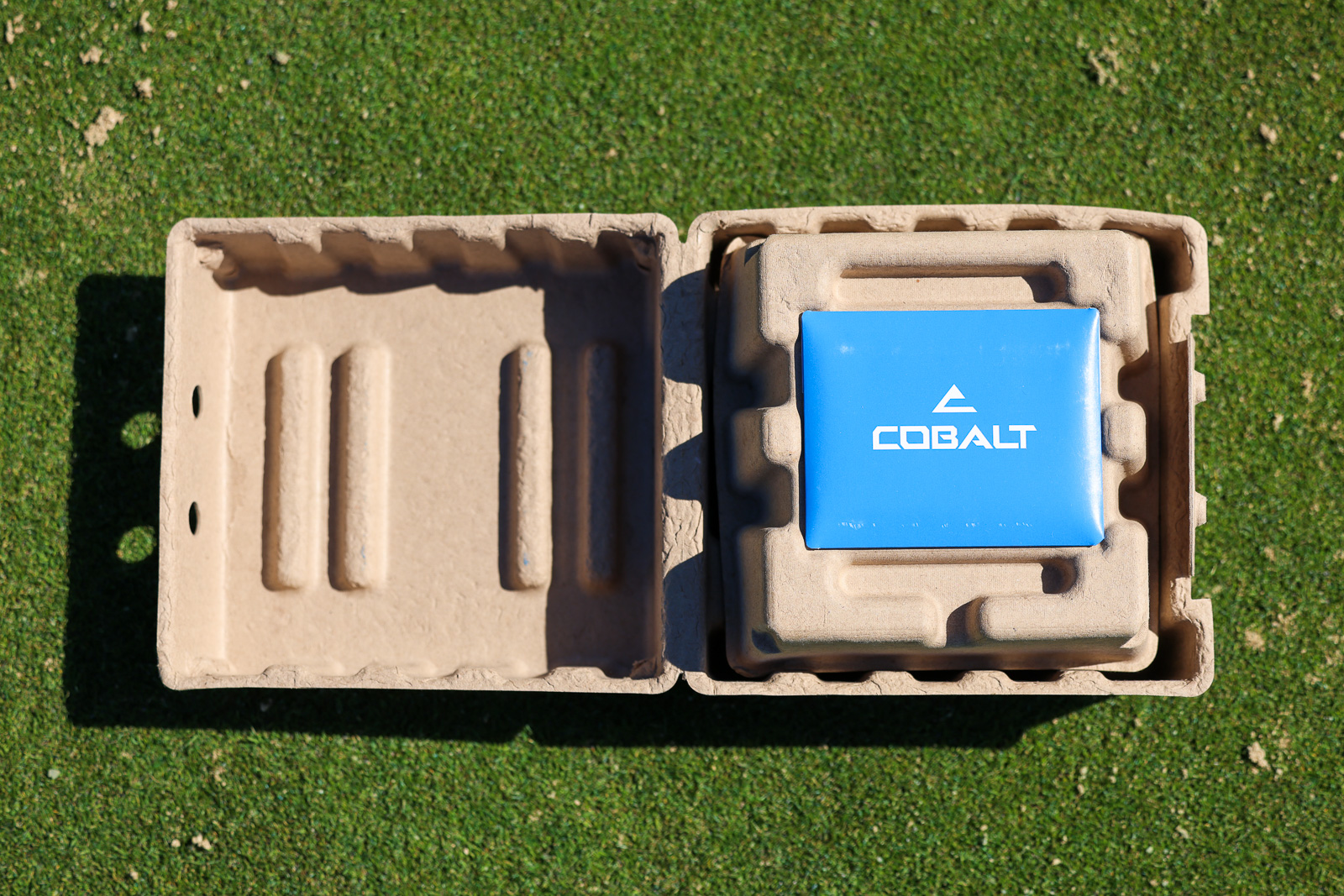
That said, aside from a box that is a bit resemblant of an egg carton, this is one product that speaks for itself.
Cobalt includes the same case that the Q-6 uses, which is a good thing. It’s a high-quality canvas and has a fur lining on the inside that makes you feel as though your device will always be well protected while it’s inside.
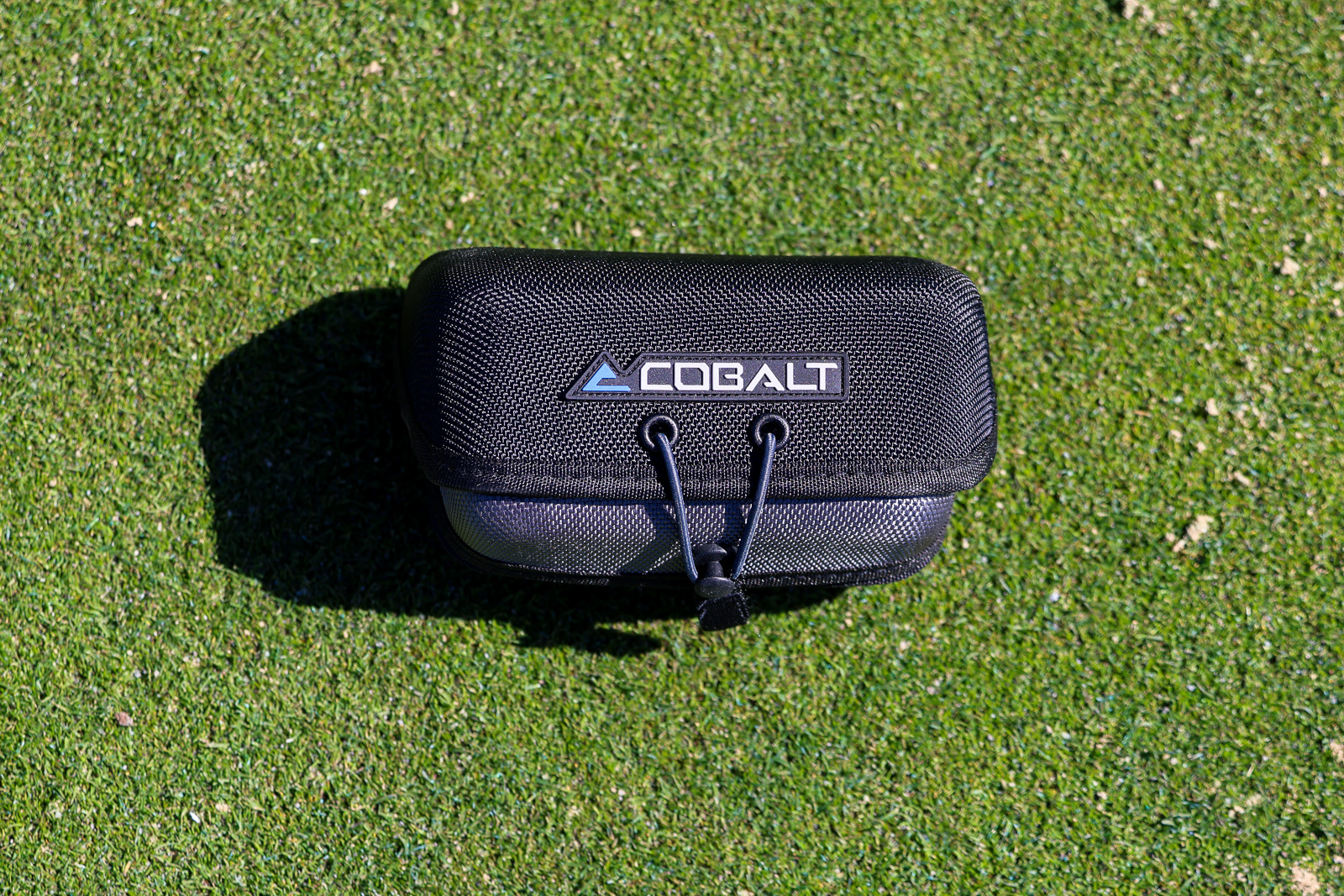
Picking up the Cobalt Q-4 Slope, it’s clear the build quality is as good, or better, than anything in the sub $300 price range.
It’s one of the only fully waterproof, IPX7 devices in this price range.
While this level of waterproofness is generally overkill for a rangefinder, it does make everything feel more durable, more expensive, and gives you some extra piece of mind.
This alone is already setting the Q-4 apart from many competitors. The Bushnell V6 Shift is IPX6, and the Precision Pro NX10 is IPX4 (I believe) – as a comparison.
Despite the pedestrian packaging, the Cobalt Q-4 Slope makes a very good first impression.
Cobalt Q-4 Slope: Features and Differences from the Q-6
With the Q-6 retailing for just over $150 more than the Q-4, there has to be some differences, right?
Of course.
We’ll talk about performance in a minute, but let’s first look at some of the basic features and what the biggest differences between the two devices are.
Major differences:
- 6x magnification in Q-4, 7x in Q-6
- Q-6 has the ability to have “always on’ red back-lit display
- Distance: 450+ yard to pin on Q-4, 600+ yards on Q-6
- Better display on the Q-6
- Q-6 has the “SmartSwitch”
And that’s pretty much it. But let’s look at these a little bit closer.
7x vs 6x Magnification
The biggest one for me personally comes down to optics.
While the optics on the Cobalt Q-4 are actually very good by any standards, it is a 6x magnification device, while the Q-6 is 7x.
This doesn’t mean much until you use a 6x and a 7x back-to-back.
Everything in the 7x just feels bigger, clearer, more enjoyable to use, and easier to lock onto your target.
There are very few rangefinders that feature 7x magnification under $300. The Blue Tees Series 3 Max is the only one that comes to mind. It’s a great device, but the optics are definitely a level or two below more expensive rangefinders.
This holds true when you compare the Blue Tees to the Cobalt Q-4 as well – the Cobalt simply looks better.
Display on the Cobalt Q-4 vs. Q-6
The Q-6 has one of the best displays of any device I’ve seen. It’s very bright, and very clear. If you like having a red display rather than black, you can adjust the brightness using the “SmartSwitch” which works very well. It gets very bright, and it’s very clear.
The display on the Cobalt Q-4 Slope is very good for its class, but not quite at the level of the Q-6 or Bushnell X3. It’s very similar to the latest Bushnell V6.
At first, I had some issues with the red backlight. I was having trouble figuring out how to turn it on or off. Turns out this was user error.
When you have the red display turned on, it will actually automatically detect the scene condition and then choose the color and brightness for you.
In practice, it works pretty well, but I’d prefer to have full control over the display as you can in the Q-6.
Distance Measurements
Honestly, this is a non-factor to me.
The Q-4 can accurately detect a pin from within 450 yards, and trees from 1,000 yards+.
The Q-6 can detect a pin from 600 yards and trees from 2,000 yards+.
This is golf. You can’t hit it 450 yards.
So both of these will have plenty of distance and range for what you need it to do.
With features often only found in much more expensive rangefinders, this is one of the best devices on the market under $300.
How Does the Cobalt Q-4 Slope Perform?
I had very high hopes for the Cobalt Q-4 Slope.
I’ve been singing the praises for the Q-6 ever since I started using it. Honestly, it’s kind of a tough sell. It’s an expensive product, and there’s a lot more hype and marketing dollars coming from other companies.
But the product itself is among the best out there.
Is the Cobalt Q-4 Slope Accurate?
I’m very happy to report, that I can say the same thing about the Q-4 Slope.
For starters, it works exactly how it should and how you’d expect it to.
This is what’s most important.
Can I get reliable, accurate numbers easily, and quickly? With the Q-4, the answer is a resounding yes.
The Q-4 still features both Cobalt’s PinSense and Surge technology. These are what ensure you’re getting the correct “locked on to flag” distance, and then getting the ensuing vibration to give you a tactile confirmation you’re reading the flag.
Most rangefinders at every price now have a vibration feature.
But here’s something you may not realize. Not all of them also incorporate a flag lock system.
Many budget to mid-level rangefinders (like the Precision Pro NX9, NX10, and Blue Tees Series 3) will vibrate not just when they lock onto a flag, but will do so for any ranged distance.
It’s a nice sensation but doesn’t do much to provide confidence that you’re getting the number you need.
The Cobalt Q-4 takes the “PinSense” feature from the Q-6 and incorporates it, which is actually a very notable feature for a product that retails for $295.
Both the Q-4 and the Q-6 have one slope feature I’m not a fan of, however. Neither device gives you both the slope and actual distance simultaneously. It will tell you how many degrees up or down the target is, and then the adjusted number. The number of degrees really means nothing to me. I’d rather see that be the actual distance, followed by a slope-adjusted distance.
You can toggle the slope switch on both devices to then have it show you the other number, but this is an extra step that doesn’t feel necessary.
Usability of the Cobalt Q-4
The Q-6 has a slightly raised trigger button on top of the device compared to the Q-4 which is more embedded. I personally prefer the design and feel of the Q-6, but this is a minor issue, and the distance button on the Q-4 works perfectly well.
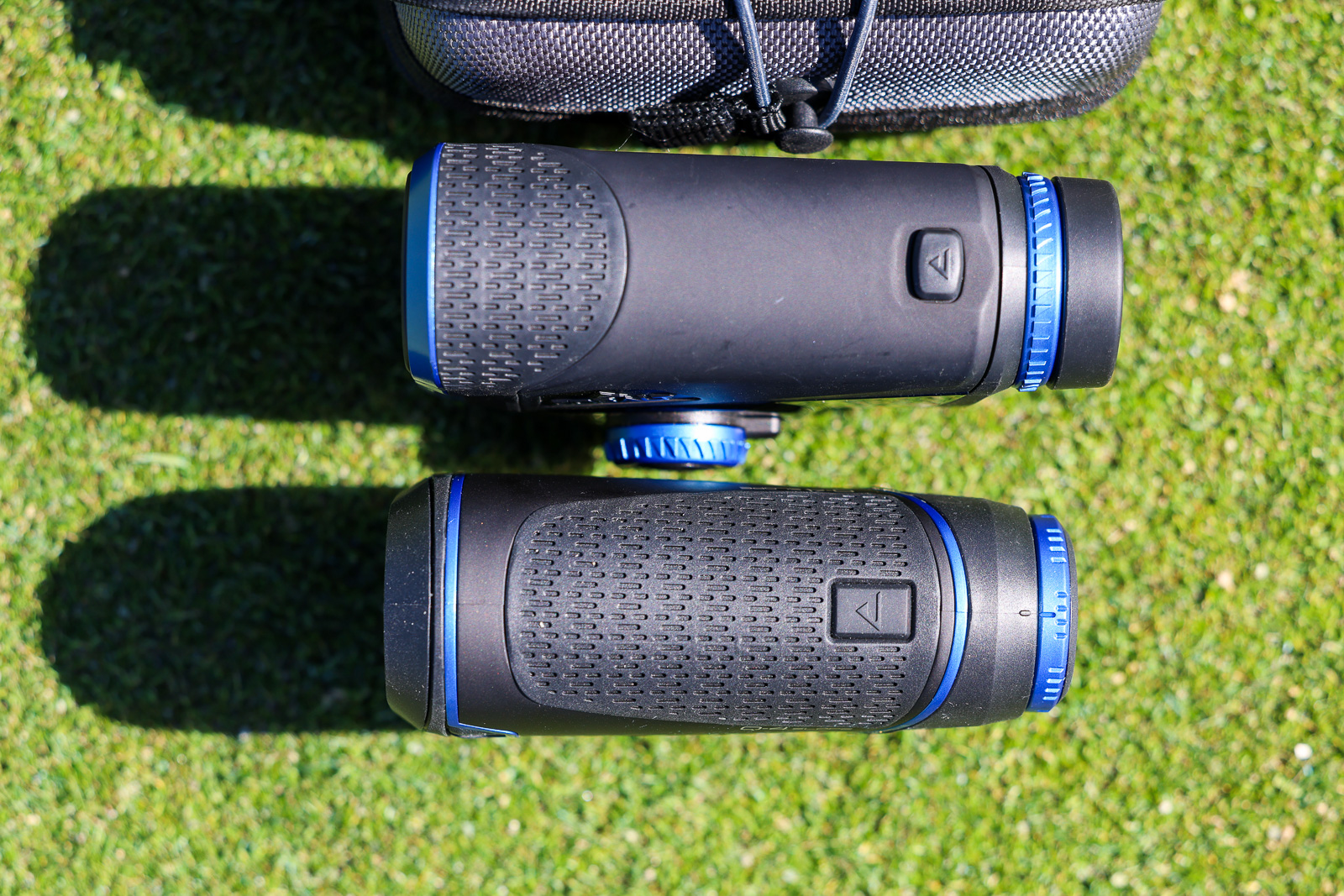
On the side of the Q-4 are 3 additional buttons:
- Yards/Meters
- Display
- Slope
These all do exactly what you’d expect them to, and work well.
When slope is on, a small red LED light is illuminated, which is great for tournament play.
While I think other devices do a little bit better in terms of incorporating this switch into their design, it does the job.
I love that the Q-4 doesn’t have a complicated menu system. These buttons do everything you need.
And once I learned about how the red/black display feature worked, I’ve had zero issues with this.
Cobalt Q-4 Speed and Performance
When comparing the Q-4 Slope directly against the Q-6 Slope, it gives me almost identical numbers. The Q-6 gives numbers down to 1/10th of a yard and the Q-4 does it down to half a yard.
No one needs this level of precision, but it does give you confidence in the accuracy of the devices.
The Q-4 is also just as fast as the Q-6.
For all the important stuff, it really performs just as well as its more expensive sibling.
The difference is that both the optics and the display on the Q-6 are bigger and brighter. I think the Q-6 feels a bit better in the hands, and the “SmartSwitch” I’ve found to be genuinely useful for adjusting brightness levels in variable conditions.
But as far as speed and accuracy? They’re basically the same.
Final Thoughts on the Cobalt Q-4 Slope
I’m legitimately impressed by what Cobalt has been able to do with a device at this price point.
Build quality is far and away better than any Slope-enabled rangefinder at this price point.
It’d be nice if it was 7x magnification, and I’d love it if it showed both actual and adjusted distances simultaneously – but those are minor concerns on an otherwise excellent golf rangefinder.
I recently reviewed the Bushnell Tour V6 Shift. I think that is arguably the most comparable product to this. Both have similar features, build quality and feel.
The difference? The Bushnell costs over $100 more.
Even the non-slope enabled V6, which is excellent, comes in at $299 – or 4 bucks more than the Cobalt.
Personally, I do really prefer the Q-6 Slope model. I just keep going back to it for its wonderful user experience and supreme accuracy.
But for over $150 less, the Q-4 is a fantastic option that retains the accuracy, but isn’t quite on the same level as far as some other features go.
But at this price? It’s clear the Cobalt Q-4 Slope is a front-runner for best all-around rangefinder for under $300. It really is that impressive.
With features often only found in much more expensive rangefinders, this is one of the best devices on the market under $300.
This page contains affiliate links. This means that if you click a link and buy one of the products on this page, I may receive a commission (at no extra cost to you!) This doesn’t affect our opinions or our reviews. Everything we do is to benefit you as the reader, so all of our reviews are as honest and unbiased as possible.
A Strong Contender for Best Rangefinder Under $300
The Cobalt Q-4 build quality is top of the class for rangefinders under $300. As is it's pin seeking technology and accuracy. The downside is it lacks a magnet and the ability to see both slope and non-slope distances at the same. However aside from that, there's a lot to love here at this price.
The Good
- Great build quality and looks great
- Best pin seeking vibration technology under $300
- Very accurate
The Bad
- No built in magnet
- Can't see slope and non-slope distances at the same time
-
Presentation
-
Performance
-
Price
-
Personal Affinity

